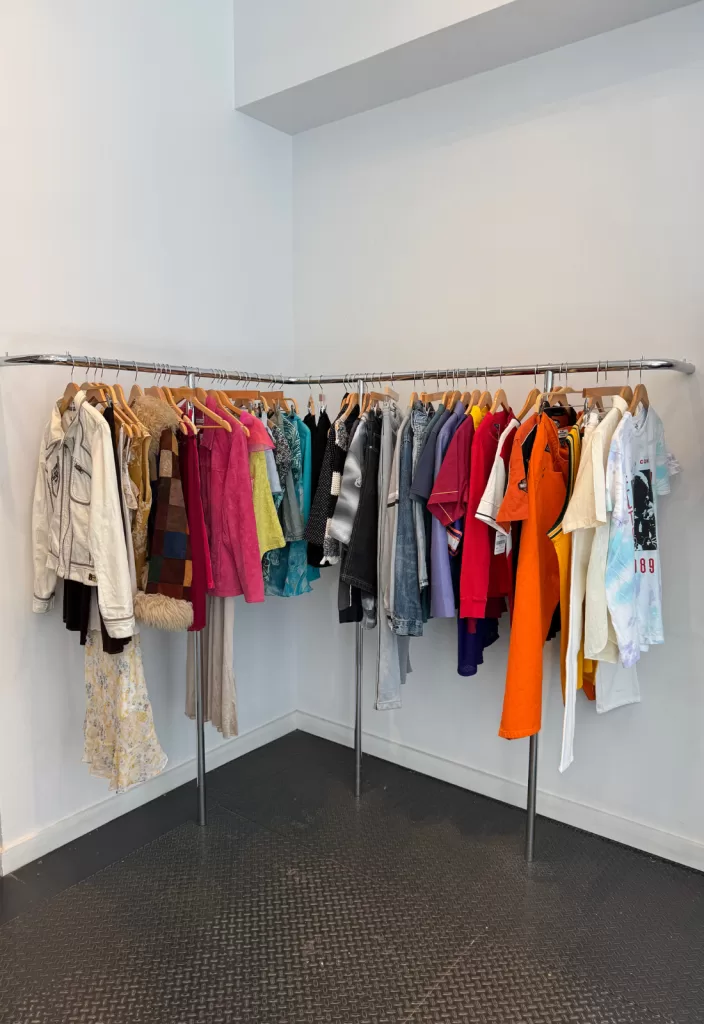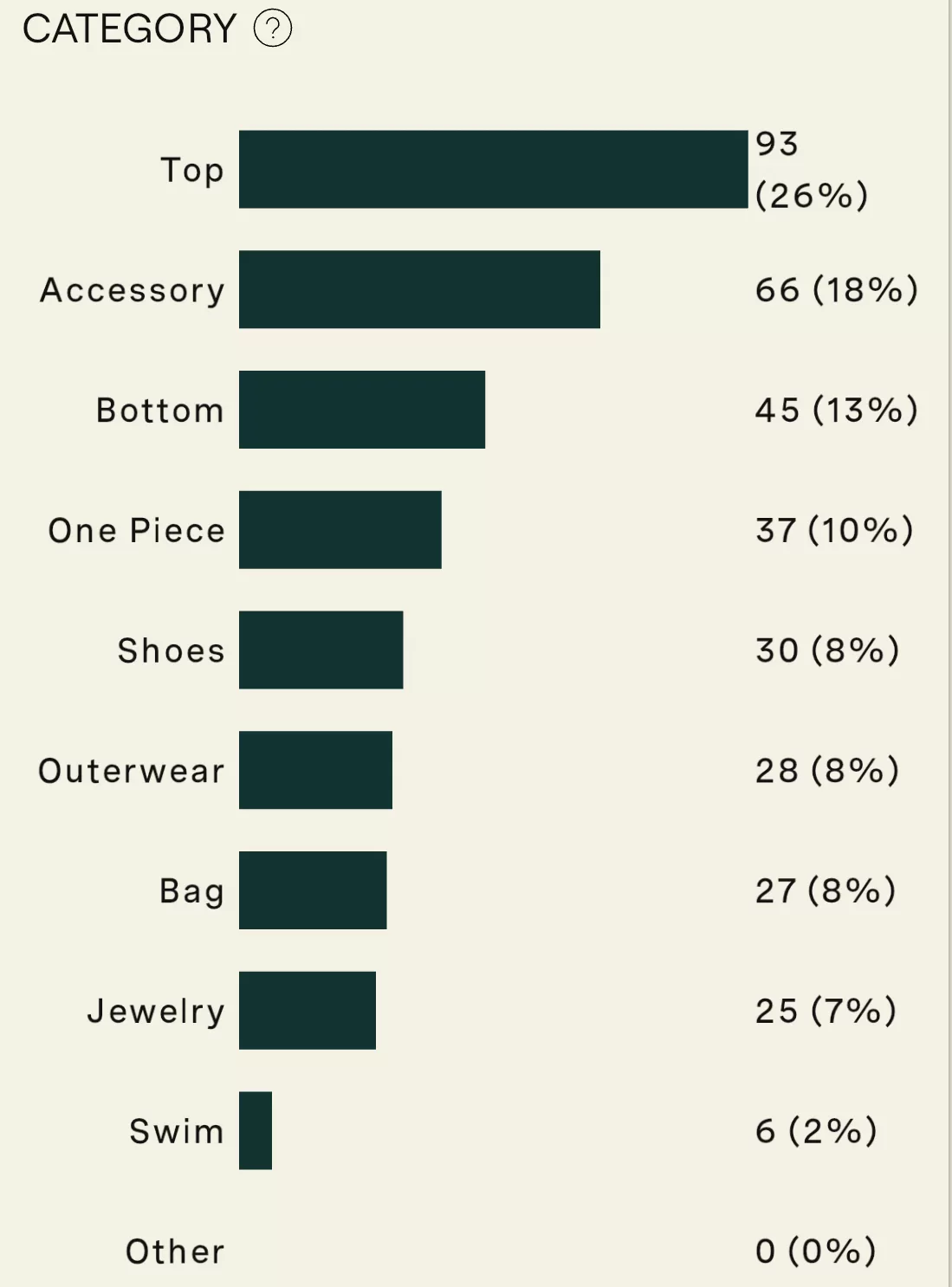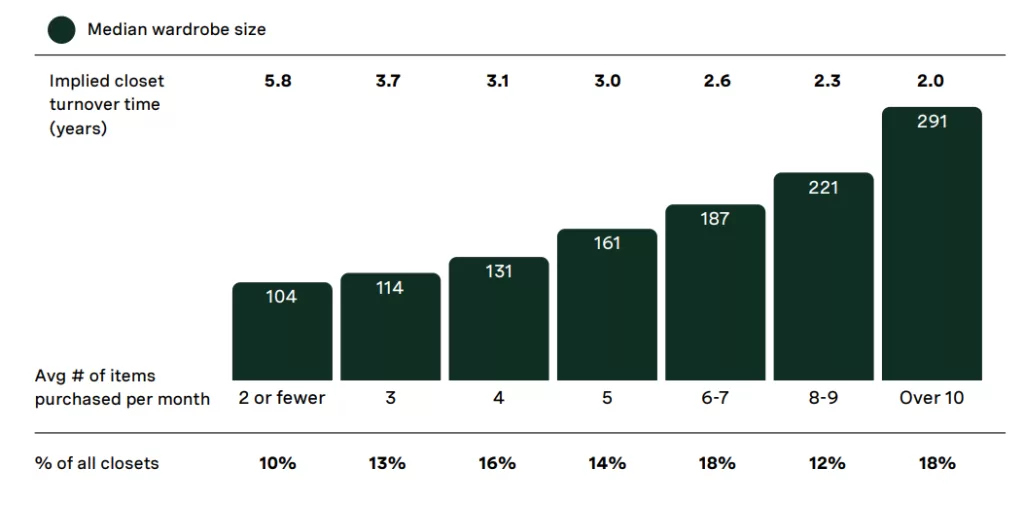
Tulips are blooming. Allergies are acting up. Our spring wardrobes are making a comeback. And I’m curious about how often we wear our clothes.
You might be pulling out last year’s dresses or rediscovering sandals you forgot you owned. Past me would take this moment to purge—tossing anything that didn’t “spark joy.”
But now? I’ve become immune to purge culture.
As someone who’s spent the last few years building a higher-quality, more intentional wardrobe, I no longer feel the need to start fresh every spring. Instead, I focus on how to wear my clothes more often and make the most of what I already own.
The Closet Question No One Talks About
For the last three years, I’ve tracked every new addition to my wardrobe—and how much I spend. But I was missing a crucial piece of the puzzle: closet usage.
- How many pieces do I own?
- How often do I wear them?
- And how does my wardrobe compare to others?
Thankfully, a new report from Indyx—the wardrobe tracking app I use and love—scanned tens of thousands of wardrobe to find out.
Introducing the State of Our Wardrobes 2025
Indyx recently released its first-ever State of Our Wardrobes report, analyzing data from over 10,000 closets and more than 10 million clothing items.
What makes this report different is that it doesn’t just focus on garment production or recycling—it zooms in on the usage phase, a massively overlooked part of the fashion life cycle.
Here’s what stood out:
1. The average wardrobe has 166 items
Mine? 342. 🫣
At first, I was surprised. I don’t consider myself a big shopper—but I did get more granular than most when uploading my wardrobe into the Indyx app. That includes gym clothes, PJs, winter accessories, and even my golf outfits.
So maybe the size of my wardrobe isn’t the issue—it’s my love of data? What does your wardrobe look like?

2. Most of our clothes aren’t worn often
- 7 times is the average number of wears per clothing item. It jumps to 10 times for bags and accessories.
- 25% of the average wardrobe? Never worn at all.
That’s a lot of unworn potential sitting in our closets.
The report also revealed that we’re adding 59 new pieces a year, or nearly 5 items a month. With that rate of growth, it’s no wonder so many pieces go untouched.
3. Less shopping = longer-lasting items
The data shows a direct connection between how often we shop and how long our clothes stay in our wardrobes. The less frequently we buy, the more we tend to value (and wear) what we already have.
If you’re looking to wear your clothes more often, one of the most impactful things you can do? Buy less.

My Wardrobe, by the Numbers
After two years of tracking, I’ve added 100 pieces total—far below the average of 59 per year. But that number still felt high. So in 2025, I set a new goal:
🎯 Add just 25 items this year—thoughtful, long-lasting pieces only.
So far this year, I’ve added 10 new items to my wardrobe, with 70% of them secondhand.
Even better? My closet usage is at 54% just four months into the year. That means I’ve worn 185 different items since January—getting creative with what I already own, shopping my closet for trips and rediscovering pieces I forgot I loved.
This kind of data makes getting dressed a lot more rewarding.
Want to Track Your Closet Too?
If you’ve ever wondered how many clothes you actually wear—or if you just want to be more mindful about your shopping—a digital wardrobe can change everything.
I previously wrote about how I tracked my outfits for 75 days with Indyx. It completely transformed my perspective on personal style, underused pieces, and what’s worth buying next.
Sustainable fashion isn’t just about where your clothes come from—it’s about how you use them. And it turns out, tracking your wardrobe might be one of the simplest and more affordable ways to get more wear out of your wardrobe.
Enjoyed this post? Subscribe to my weekly newsletter, Finely Crafted for more slow fashion insights, wardrobe tips, and curated things worth your time (and dime).

Leave a Reply